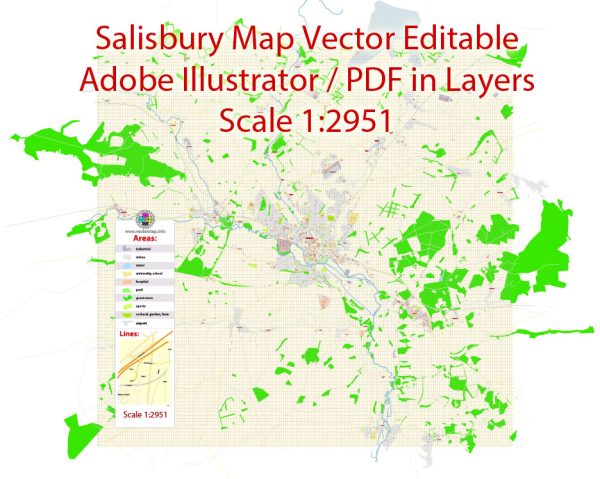Salisbury, located in Wiltshire, England, has a rich history of urban development dating back to ancient times. Here is a brief overview of the key historical periods in Salisbury’s urban development:
- Iron Age and Roman Period (circa 500 BC – 410 AD): The area around Salisbury has evidence of human settlement dating back to the Iron Age. During the Roman occupation of Britain, a road known as the Portway linked Old Sarum (a hillfort settlement) to other Roman towns. Old Sarum itself was a significant Roman settlement.
- Medieval Period (5th – 15th centuries): In the 13th century, the construction of Salisbury Cathedral began. Bishop Richard Poore, recognizing the limitations of Old Sarum, chose a new site for the cathedral in the early 13th century. The new location was closer to the River Avon and offered better access to resources. The construction of Salisbury Cathedral was completed in 1258, and the city of Salisbury began to grow around it.
- Market Town and Trade (15th – 18th centuries): Salisbury evolved into a thriving market town during the medieval period. The city’s street plan, with a grid pattern centered around the cathedral, reflects the planned nature of its development. The Market Place became a focal point for commerce, and the city’s economy thrived through trade and market activities.
- Georgian and Victorian Periods (18th – 19th centuries): During the Georgian and Victorian eras, Salisbury continued to expand. The 18th century saw the development of elegant Georgian architecture in the city. The introduction of the railway in the 19th century further facilitated growth and connectivity. The railway station was established, connecting Salisbury to London and other major cities.
- 20th Century and Beyond: In the 20th century, Salisbury faced challenges associated with urbanization and modernization. However, efforts were made to preserve the historic character of the city. The area around Salisbury Cathedral, known as the Cathedral Close, remains a well-preserved medieval precinct. The city has continued to adapt to changing times while preserving its historical identity.
- Contemporary Development and Challenges: In recent years, Salisbury has faced challenges such as urban planning issues, traffic congestion, and the need for infrastructure improvements. However, ongoing efforts to balance development with the preservation of the city’s historic character are evident.
Throughout its history, Salisbury has retained much of its medieval charm and continues to attract visitors with its historic architecture, including the iconic Salisbury Cathedral and its close-knit city center. The city’s history of urban development reflects the dynamic interplay between social, economic, and architectural factors over the centuries.


 Author: Kirill Shrayber, Ph.D.
Author: Kirill Shrayber, Ph.D.